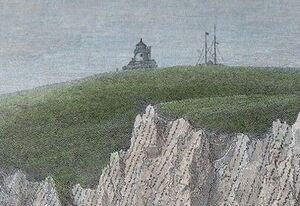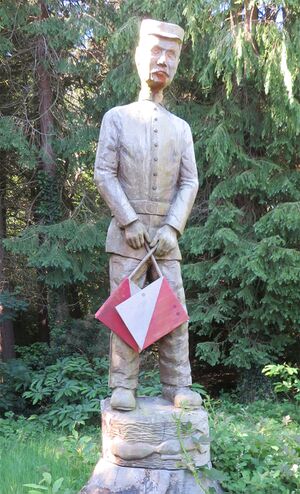Admiralty Signal Stations, Napoleonic Period
In Napoleonic times, Admiralty Signal Stations were built across the Isle of Wight as part the British Navy's nationwide network of Signal Stations for early warning of enemy ship movements off the coast.
This was before the time of telephones and radio etc., and communications were slow, but visual signals from hill-top to hill-top were almost instantaneous and messages could be passed along the chain. Signal Stations were located around the UK coast in the late 18th/early 19th centauries, each station being in sight of neighbouring ones forming a 'chain' to the Naval ports - another line was constructed from Portsmouth to London so that the government could be quickly kept informed.
A watercolour by John Nixon dated circa 1806 shows the Ashey Seamark with a nearby Admiralty Signal Station - this would have enabled the naval personnel stationed on the top of Ashey Down to give Portsmouth information of ship movements in Sandown Bay and pass on messages from other stations within view.
As well as Ashey Down, other Signal Stations on the Island are reputed to have been located at Parkhurst, Dunnose, St. Catherine's Down and Needles Point.[1] It appears that once the Napoleonic Wars finished, there was not considered a need to maintain the Signal Stations and they were dismantled.
The Signal House in Parkhurst Forest appears to be on the site of the Parkhurst Signal Station, probably this was a 'relay station' for messages from the Needles station, nearby is (2021) a carved memorial to its history (although the semaphore signals would have been raised on masts rather that held by a person!).

